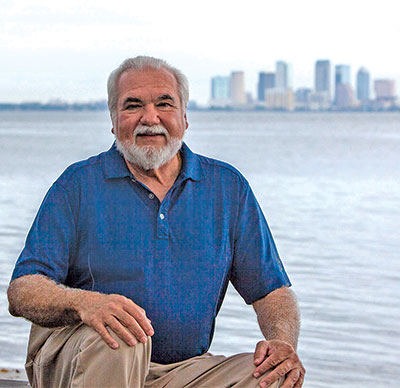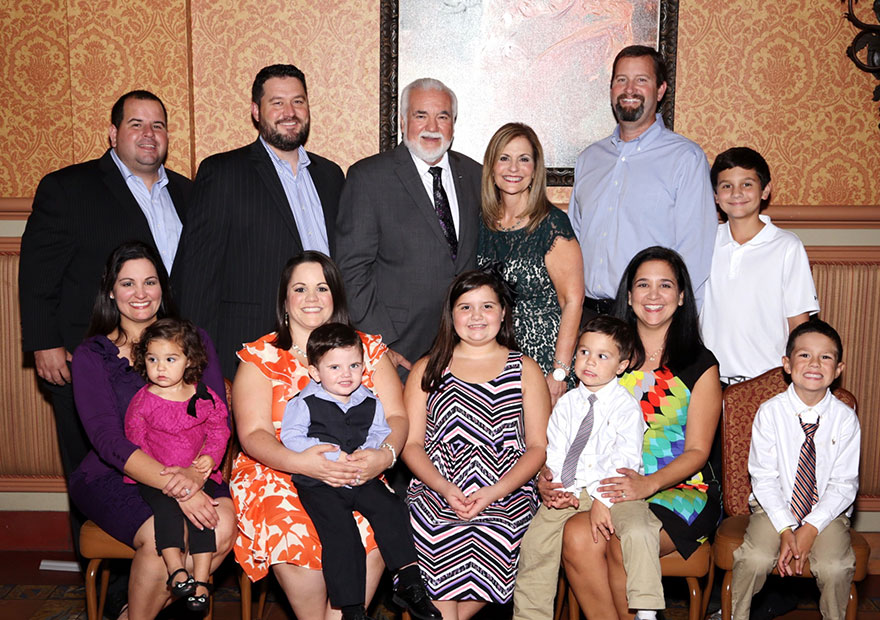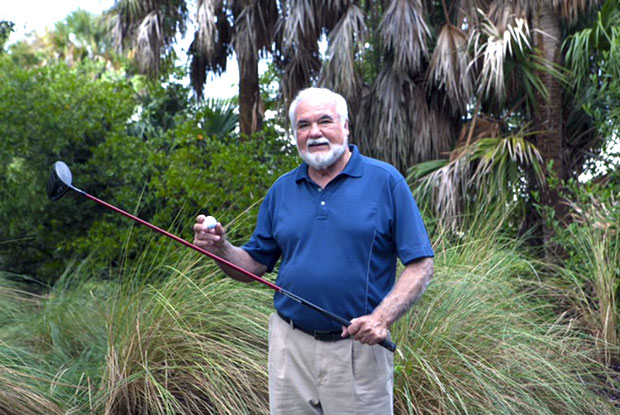
Executive Director of the Tampa Bay Regional Planning Council since 1998, Pumariega retired last October after 35 years with TBRPC, helping guide growth as the region’s population boomed from about 1.5 million to more than 4 million today. The first regional planning council in the state, TBRPC has an impressive list of accomplishments under Pumariega’s leadership including:
- Creating the nation’s first regional hurricane evacuation plan in 1980, tested with Hurricane Elena in 1985 when nearly 400,000 residents evacuated Pinellas County. “We learned a lot from that,” he says, “particularly the need for post-disaster planning.” The regional plan has been updated six times since then, and TBPRC played a leading role in developing the nation’s first statewide hurricane evacuation plan in 2010.
- Training over 10,000 first responders – police, fire fighters and other emergency personnel in natural disasters, hazardous materials and Homeland Security.
- Reviewing over 260 Developments of Regional Impact (DRIs) covering 272,000 homes, 65 million square feet of retail/commercial space and 110 million square feet of office space, equivalent to 23% of residential growth in the region, 51 International Plazas and 41 Carillon Office Parks when built out in 2035.
- Completing more than 500 economic and fiscal impact studies for local governments and economic development organizations, including a report on the economic impact of baseball spring training that led to the Florida Legislature partially funding spring training facilities across the state. A report last year showing that a clean bay supports nearly one in every five jobs in the Tampa Bay watershed highlighted the importance of natural resources in the region.
- Coordinating the ONEBAY visioning effort, resulting in nearly 10,000 people from across the region participating in the creation of a long-term vision for development.
That plan has now been incorporated into the Florida Department of Transportation’s Future Corridor initiative and the FTP 2060 Plan. - Pursuing designation as an Economic Development District through the U.S. Economic Development Administration that provided federal dollars to create the Tampa Bay Economic Development Strategy and support the goals it identified, including $2.2 million to expand a supply pier at Port Tampa Bay, $1.7 million to allow Hillsborough Community College to create an automotive service technology program, the $900,000 Targeted Industry Cluster and Workforce Skills Study, and the $950,000 for the Florida Energy Resiliency Study with TBRPC taking the lead statewide.
And while TBRPC is recognized most often as the agency that guides development, it also has deep roots in natural resource planning, dating back to the mid-1970s when Tampa Bay was so polluted that “60 Minutes” taped raw sewage flowing into a residential canal. “Even before the Agency on Bay Management was officially created in 1985, we were doing research on the issues facing Tampa Bay and working with environmental groups and the University of South Florida,” Pumariega said.
[su_pullquote align=”right”]“I see continued success for the TBRPC. Thank you for the opportunity to serve the region’s local governments and citizens. I hope my contributions have been worthy of the trust placed in me.”—Manny Pumariega, Executive Director of the Tampa Bay Regional Planning Council, Retired[/su_pullquote]The council was instrumental in teaming up with Congressmen C.W. “Bill” Young and Sam Gibbons – who represented opposing political parties and opposite sides of the bay – to create the Tampa Bay Estuary Program in 1990, bringing additional federal dollars to the region and creating the framework that has made Tampa Bay one of the only urban estuaries in the world where water quality is improving.
TBRPC also significantly wrote the legislation that established the highly successful SWIM (Surface Water Improvement and Management) program which has purchased and restored thousands of acres of environmentally sensitive land across the region. “The original plan was for the funding to come to the council, but we had to match $4 million from the state,” he recalls. “The district (Southwest Florida Water Management District) could provide matching funds and was ultimately designated as the management entity.”
That focus on building partnerships that benefit the region has been the basis of Pumariega’s success, he says. “We’re the ‘team behind the team’ and we support the local governments rather than looking for our own recognition,” he said.
Along with his professional accomplishments – including earning designations as a Certified Public Accountant and the American Institute of Certified Planners as well as a master’s degree in business administration from the University of Tampa – Pumariega has many personal successes. He and his wife of 43 years, Doreen, have three daughters and six grandchildren in a tight-knit family that live just minutes away from each other and share Sunday dinner almost every week.

“They keep us running,” he says of the grandchildren who range in age from 2 to 12 with activities spanning golf, baseball, soccer, track, basketball, flag football, dance and singing.
A native of Cuba who came to Tampa with his family in 1960, Pumariega graduated from Hillsborough High School and won the state championship in baseball his senior year. He earned a baseball scholarship to USF where he graduated with a degree in accounting. He started his professional career working for B.F. Goodrich – learning the tire business from the ground up and keeping books for dealers – but a promotion would have taken him away from Tampa, where Doreen’s family has lived for five generations.
“I wasn’t really thinking about a government job but there was an opening for an accounting supervisor at the city of Tampa. I didn’t think I was qualified, but I got the job and so there I was at 23 years old supervising a staff of about 15 people.”
While his primary responsibility was accounting for funds from state and federal grants to ensure that they were spent properly, he took his job a step further and began looking at the impacts of those grants and their return on investment. Seven years later, realizing that there was limited opportunity for promotion within the city, he once again looked at private-sector opportunities, including GTE (now Verizon) and a national accounting firm.
He decided not to apply for a job at TBRPC when it was first advertised in the fall of 1979 but later decided that the drive from Tampa to St. Petersburg – where parking was free and nearby – was worth the difference in driving to downtown Tampa and parking further away when it was re-advertised in the spring of 1990.
“I think the biggest reason I got the job then was because I had taken that extra step to look at the benefits those grants (at the city of Tampa) provided, rather than just accounting for the funds and maintaining compliance,” he says.
Thirty-five years later, he’s still focused on spending money wisely. “Particularly over the past few years, when state funding for long-term planning has been cut, we’ve been able to make major strides as an organization because of our ‘big-picture’ mindset. Our staff still knows the importance of getting the details right, we’re multi-taskers and highly productive. I’ve been incredibly fortunate over the years to work with this dynamic team of professionals.
“I see continued success for the TBRPC. Thank you for the opportunity to serve the region’s local governments and citizens. I hope my contributions have been worthy of the trust placed in me.”
[su_divider]